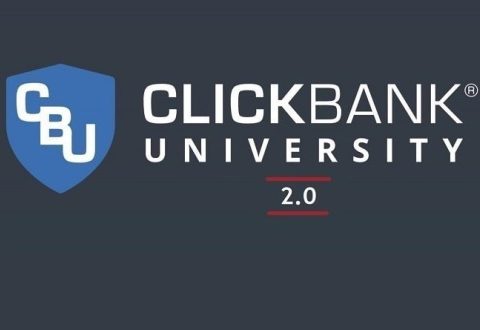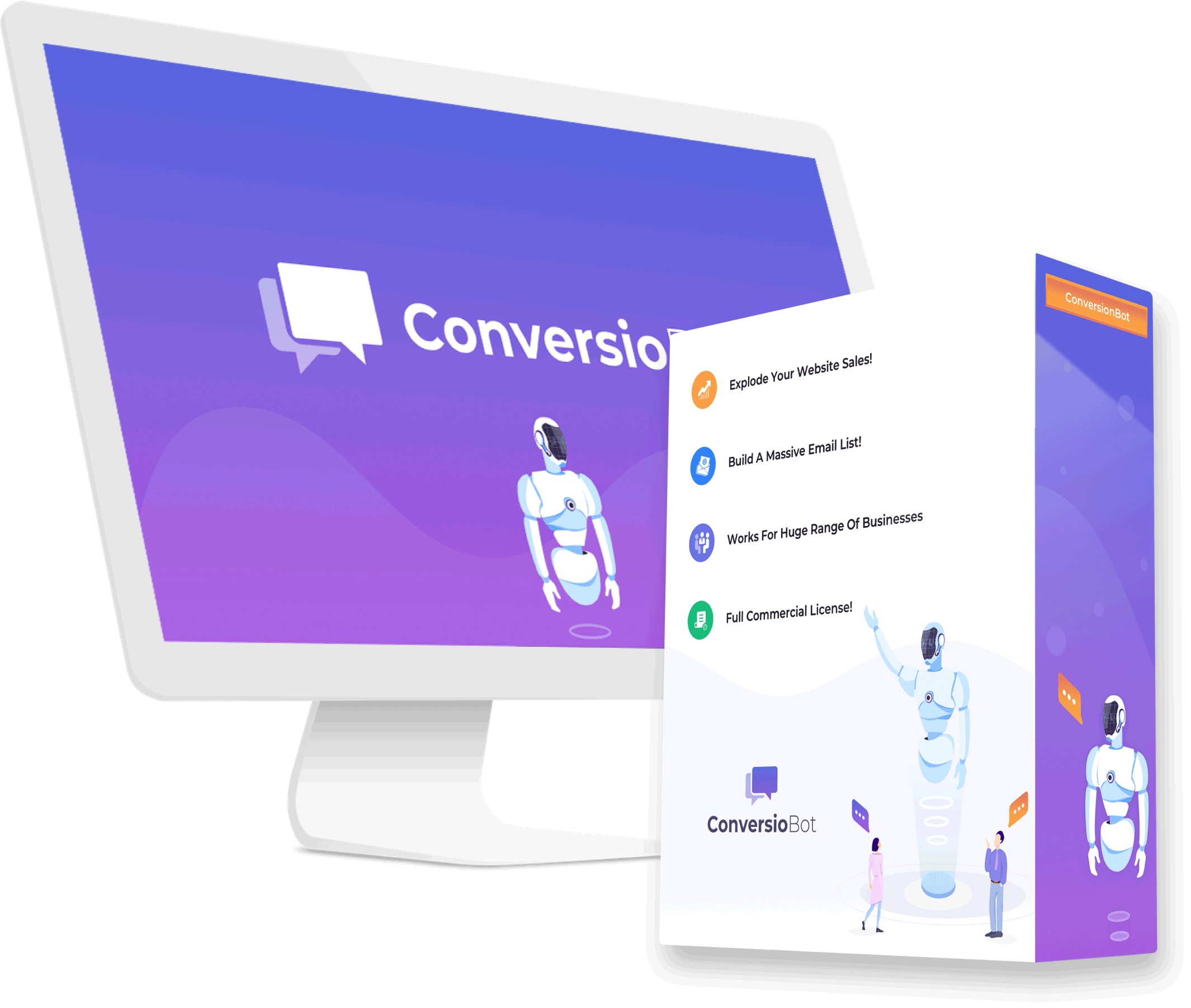Deep Details of 25 Ways to Make Good Money Online
Different strategies to make good money online
 There are many skills and strategies that can help people make good money online, and the specific approach will depend on a person’s interests, strengths, and the market demand. Here are some suggestions to consider:
There are many skills and strategies that can help people make good money online, and the specific approach will depend on a person’s interests, strengths, and the market demand. Here are some suggestions to consider:
- Digital Marketing: Digital marketing is a broad field that includes several disciplines like SEO, PPC, social media marketing, email marketing, and content marketing. Learning these skills will help you promote your business or products online and make more sales.
- E-commerce: E-commerce is a booming industry, and learning how to create, launch, and market an online store can be a valuable skill. This includes understanding how to source products, create an online storefront, manage inventory, and fulfill orders.
- Coding and Web Development: Learning to code and build websites can lead to a lucrative career in web development. You can create websites for others or develop your own products and services that can generate income.
- Copywriting: Copywriting is the art of writing persuasive and compelling content that drives sales and conversions. By learning how to write effective copy, you can market products and services more effectively and generate more revenue.
- Video Editing: With the rise of video content, video editing skills are in high demand. Learning how to edit videos can enable you to offer your services as a freelancer, create your own content, or launch a YouTube channel.
- Affiliate Marketing: Affiliate marketing is a type of marketing where you promote other people’s products and earn a commission for each sale you make. Learning how to find the right products to promote, how to create effective marketing campaigns, and how to track your results can help you make good money online.
- Online Courses: Creating and selling online courses is a lucrative business model, particularly if you have expertise in a specific niche or subject. Learning how to create effective online courses, market them, and sell them can help you earn a significant income.
- Social Media Management: Social media is an essential marketing tool for businesses, and learning how to manage social media accounts and create engaging content can be a valuable skill. You can offer your services as a social media manager or create your own social media pages and grow a following to promote products or services.
- Search Engine Optimization (SEO): SEO is the process of optimizing a website to rank higher in search engine results pages. Learning how to do keyword research, optimize website content, and build backlinks can help you attract more organic traffic to a website and increase revenue.
- Graphic Design: Graphic design is an important skill for creating engaging visuals and branding materials for businesses. Learning how to use graphic design tools and software can enable you to offer your services as a freelancer or create your own products like printables, logos, and graphics for websites and social media.
- Dropshipping: Dropshipping is a business model where you sell products online without having to hold inventory or fulfill orders yourself. Learning how to find profitable products, set up an e-commerce store, and manage customer service can help you make good money with dropshipping.
- Virtual Assistance: Virtual assistance is a type of online job where you provide administrative, technical, or creative assistance to clients remotely. Learning how to manage schedules, communicate effectively, and offer valuable services like social media management, email management, and content creation can help you build a successful virtual assistance business.
- Podcasting: Podcasting is a popular form of content creation, and learning how to create and produce engaging podcasts can help you build a loyal following and monetize your content through sponsorships, ads, and affiliate marketing.
- Freelance Writing: Freelance writing is a flexible and lucrative career that involves writing content for businesses, websites, blogs, and other media. Learning how to write engaging and high-quality content, pitch your services to clients, and build a portfolio can help you build a successful freelance writing business.
- Web design and development: With the increasing importance of online presence for businesses, learning how to create and design websites can be a valuable skill.
- Email marketing: Email marketing is a powerful tool for businesses to reach their customers and promote their products or services. Learning how to create effective email campaigns can be a valuable skill for freelance marketers.
- App development: With the growing popularity of mobile devices, learning how to develop mobile apps can be a valuable skill for software developers.
- Online advertising: Online advertising is a critical component of digital marketing. Learning how to create effective online advertising campaigns can be a valuable skill for digital marketers.
- Customer service: Many companies are outsourcing customer service to remote workers. Learning how to provide excellent customer service online can be a valuable skill for freelancers.
- Project management: Freelancers often work on multiple projects at the same time. Learning how to manage projects effectively can help freelancers stay organized and deliver high-quality work to clients.
- Data analysis: Data analysis is an essential skill for businesses to make informed decisions. Learning how to analyze data can be a valuable skill for freelancers and consultants.
- Cybersecurity: With the increasing risk of cyber attacks, learning how to secure online systems and data can be a valuable skill for IT professionals and businesses.
- Online coaching and mentoring: With the rise of online learning, many people are looking for coaches and mentors to help them achieve their goals. Learning how to provide coaching and mentoring services online can be a valuable skill for professionals in many fields.
- Online research: Many companies require research for their business operations. Learning how to conduct effective online research can be a valuable skill for freelancers and researchers.
- Blogging: Blogging and social networking have become two intertwined concepts that share certain properties and features. They both aim to create a multimedia interaction and reach out to a broad audience. While blogs can be regulated and kept private, their primary purpose is to provide a medium to voice opinions and thoughts.
The key to making good money online is to develop valuable skills that are in demand and create a business or offer services that solve a problem or meet a need. It’s important to stay up-to-date with the latest trends and strategies in your field and be willing to adapt and innovate as the market changes.
-
Digital Marketing
Digital marketing refers to the use of digital channels and technologies to promote products or services and reach a targeted audience. It’s a broad field that includes several disciplines, such as:
- Search Engine Optimization (SEO): SEO is the practice of optimizing websites to rank higher in search engine results pages (SERPs). This involves researching keywords, optimizing website content, and building high-quality backlinks to improve the website’s visibility and traffic.
- Pay-per-click Advertising (PPC): PPC advertising is a form of online advertising where advertisers pay a fee each time a user clicks on their ads. Examples of PPC advertising platforms include Google Ads, Facebook Ads, and LinkedIn Ads.
- Social Media Marketing: Social media marketing involves using social media platforms to promote products or services and engage with customers. This includes creating and publishing content, running social media ads, and monitoring social media analytics to measure the effectiveness of campaigns.
- Email Marketing: Email marketing involves sending targeted messages to customers and subscribers via email. This can include newsletters, promotional emails, and automated email sequences.
- Content Marketing: Content marketing involves creating valuable and relevant content to attract and engage a targeted audience. This can include blog posts, videos, podcasts, social media posts, and other types of content.
Learning these digital marketing skills can help you promote your business or products online, reach a wider audience, and increase sales. It’s important to understand the principles and best practices of each discipline, as well as how to measure the effectiveness of your marketing efforts through analytics and data analysis. Additionally, staying up-to-date with the latest trends and changes in the digital marketing landscape is critical to staying competitive and achieving success in the field.
-
E-Commerce
E-commerce involves several key components, including:
- Online Storefront: This is the digital storefront where customers can browse and purchase products or services. It may include product pages, a shopping cart, and checkout functionality.
- Payment Gateway: This is the service that processes payments and ensures that customer transactions are secure. Payment gateways may include credit card processors like Stripe or PayPal, or other payment options like Apple Pay or Google Wallet.
- Shipping and Fulfillment: This involves packaging and shipping products to customers after an order is placed. Businesses may handle this process themselves or use a third-party fulfillment service.
- Inventory Management: This involves managing inventory levels and ensuring that products are in stock and available for purchase. This can include tracking inventory levels, managing suppliers, and forecasting demand.
- Customer Service: Providing excellent customer service is important in e-commerce to ensure customer satisfaction and encourage repeat business. This may include responding to customer inquiries, handling returns and refunds, and providing product support.
E-commerce platforms like Shopify, WooCommerce, and BigCommerce have made it easier than ever for businesses to set up an online storefront and start selling products or services online. However, it’s important to understand the principles and best practices of e-commerce, including how to optimize product pages for conversions, how to manage inventory levels, and how to provide excellent customer service. Additionally, staying up-to-date with the latest e-commerce trends and technologies is critical to staying competitive in the industry.
-
Coding and Web Development
Coding and web development are essential skills in the digital age. They involve creating and maintaining websites and web applications using various programming languages and technologies.
Here are some key details about coding and web development:
- HTML/CSS: HTML (Hypertext Markup Language) is the standard markup language used to create web pages, while CSS (Cascading Style Sheets) is used to define the look and feel of a website. Learning HTML and CSS is essential for web development.
- JavaScript: JavaScript is a programming language used to add interactivity and dynamic behavior to websites. It’s used to create features like pop-ups, animations, and interactive forms.
- Backend Development: Backend development involves working with server-side technologies and databases to create the functionality of a website or web application. Common backend languages include Python, Ruby, and PHP.
- Frontend Development: Frontend development involves creating the visual components of a website or web application using HTML, CSS, and JavaScript. It includes designing the layout, navigation, and user interface.
- Frameworks and Libraries: Web developers often use frameworks and libraries like React, Angular, and Vue to streamline the development process and create more complex applications.
- Web Accessibility: Web accessibility involves designing websites and web applications to be usable by people with disabilities. It’s important for web developers to understand accessibility best practices and ensure their projects are accessible to all users.
- Version Control: Version control is a way to manage changes to code and collaborate with other developers. Common version control systems include Git and GitHub.
Learning coding and web development can open up many career opportunities in the tech industry, including web development, software development, and mobile app development. It’s important to stay up-to-date with the latest web development trends and technologies to remain competitive in the field.
-
Copywriting
Copywriting is the art and science of creating written content that persuades and motivates readers to take action. Copywriting is used in various forms of marketing, including advertising, email marketing, social media, and website content.
Here are some key details about copywriting:
- Audience: Copywriting begins with understanding the target audience. Copywriters research the audience’s needs, pain points, and interests to create content that resonates with them.
- Purpose: Copywriting has a specific purpose, which can include selling a product, promoting a service, or encouraging readers to take a specific action. The purpose of the content determines the tone, style, and format of the copy.
- Headlines and Hooks: The headline is the first thing readers see, and it’s essential for capturing their attention. Copywriters use headlines and hooks to create curiosity and intrigue, encouraging readers to keep reading.
- Features vs. Benefits: Effective copywriting focuses on the benefits of a product or service, rather than just the features. Benefits explain how the product or service will solve the reader’s problem or improve their life.
- Calls to Action: A call to action (CTA) is a statement that encourages readers to take a specific action, such as making a purchase or subscribing to a newsletter. Effective CTAs are clear, specific, and urgent.
- Persuasive Language: Copywriting often uses persuasive language to appeal to readers’ emotions and persuade them to take action. This can include using emotional appeals, storytelling, and social proof.
- Editing and Proofreading: Copywriting involves multiple rounds of editing and proofreading to ensure that the content is clear, concise, and error-free. Copywriters often collaborate with editors and proofreaders to refine their work.
Copywriting is an important skill in marketing and advertising, and it’s in high demand in the digital age. Learning copywriting can open up career opportunities in advertising, content marketing, and copywriting agencies. It’s important to understand the principles and best practices of copywriting, as well as stay up-to-date with the latest trends and techniques in the field.
-
Video Editing
Video editing is the process of manipulating and rearranging video shots to create a finished product. It involves selecting the best footage, arranging it in a logical sequence, and adding various effects and transitions to enhance the viewing experience.
Here are some key details about video editing:
- Tools: Video editing involves using specialized software such as Adobe Premiere Pro, Final Cut Pro, and DaVinci Resolve. These tools offer a range of features for editing video footage, including cutting, splicing, color correction, and visual effects.
- Organization: Video editing begins with organizing the footage into a cohesive sequence. This involves reviewing the footage, selecting the best shots, and arranging them into a logical sequence that tells the story.
- Storytelling: Video editing is all about storytelling. A good editor can take raw footage and create a compelling narrative that engages the audience and keeps them interested.
- Audio: Audio is a critical component of video editing. Editors work with sound engineers to enhance the audio quality, add music, and create a sound mix that complements the visual elements.
- Transitions and Effects: Video editors use various transitions and effects to add polish and style to the final product. This can include adding text overlays, color grading, and creating visual effects.
- Collaboration: Video editing often involves collaboration with other members of the production team, including directors, producers, and cinematographers. Effective communication and collaboration are essential for creating a high-quality finished product.
- Output: Once the video editing is complete, the final product needs to be exported and delivered in the appropriate format for distribution. This can include various file formats for online streaming, broadcast television, or cinema.
Video editing is a highly sought-after skill in the entertainment industry, including film and television production, advertising, and social media content creation. Learning video editing can open up many career opportunities, and it’s important to stay up-to-date with the latest software and techniques to remain competitive in the field.
-
Affiliate Marketing
Affiliate marketing is a type of performance-based marketing in which a business rewards an affiliate for each customer or sale that they bring to the business through their marketing efforts. It involves promoting someone else’s products or services and earning a commission for every sale made through your unique affiliate link.
Here are some key details about affiliate marketing:
- Finding the Right Products: To be successful in affiliate marketing, it’s important to choose the right products to promote. This involves finding products that are a good fit for your audience and have a high potential for sales.
- Building an Audience: Affiliate marketing is all about promoting products to your audience. To be successful, you need to build a loyal following through content creation, social media marketing, email marketing, and other channels.
- Choosing the Right Affiliate Programs: There are thousands of affiliate programs available, each with its own commission structure and terms. It’s important to choose affiliate programs that offer competitive commissions and provide the tools and resources you need to promote their products effectively.
- Tracking and Analytics: Affiliate marketing involves tracking clicks, conversions, and sales to determine the effectiveness of your marketing efforts. Many affiliate programs provide tracking and analytics tools to help you monitor your performance and optimize your campaigns.
- Compliance and Disclosure: As an affiliate marketer, you need to comply with FTC guidelines and disclose your affiliate relationship with your audience. This includes clearly stating that you are an affiliate and including a disclaimer in your content.
- Building Trust: Successful affiliate marketers focus on building trust with their audience. This involves creating high-quality content, providing value to your audience, and only promoting products that you believe in.
- Scaling Up: Once you’ve found success in affiliate marketing, you can scale up your efforts by expanding your audience, promoting more products, and partnering with other affiliates or businesses.
Affiliate marketing can be a lucrative and flexible way to make money online. However, it requires hard work, patience, and a deep understanding of your audience and the products you are promoting. It’s important to stay up-to-date with the latest trends and techniques in affiliate marketing and to continuously optimize your campaigns to maximize your earnings.
-
Online Courses
Online courses are educational programs delivered over the internet. They offer an accessible and flexible way for learners to acquire new skills, knowledge, and credentials. Here are some key details about online courses:
- Delivery: Online courses are delivered through a variety of platforms, including learning management systems (LMS), video conferencing tools, and social media platforms.
- Format: Online courses can be synchronous (live) or asynchronous (self-paced). Synchronous courses involve live instruction and interaction with instructors and other students in real-time. Asynchronous courses allow learners to complete coursework on their own schedule, with access to pre-recorded lectures, assignments, and quizzes.
- Content: Online courses cover a wide range of subjects, from academic disciplines such as math and science to professional skills like project management and digital marketing.
- Certification: Many online courses offer certificates or badges upon completion, which can be used to demonstrate mastery of a skill or knowledge area.
- Cost: Online courses can range in cost from free to thousands of dollars, depending on the subject matter and level of instruction.
- Access: Online courses offer accessibility to learners regardless of their location or schedule. This makes them an ideal option for people who are unable to attend traditional classroom-based courses due to geographic, financial, or other constraints.
- Support: Online courses may offer various forms of support to learners, including access to instructors, online forums, and tutoring services.
- Quality: The quality of online courses varies widely. It’s important to do your research and choose courses from reputable providers with experienced instructors and positive reviews from past students.
Online courses are an excellent way to gain new skills and knowledge, advance your career, or simply explore new subjects. However, they require discipline, self-motivation, and a willingness to engage with the material and your peers in a digital environment. It’s important to carefully consider your learning goals, budget, and learning style when selecting online courses.
-
Social Media Management
Social media management is the process of creating, scheduling, analyzing, and engaging with content posted on social media platforms such as Facebook, Twitter, Instagram, LinkedIn, and others. Social media managers are responsible for building and maintaining a strong social media presence for their clients or companies, while also monitoring and analyzing performance to make data-driven decisions to improve results.
Here are some key details about social media management:
- Strategy: Social media management begins with developing a social media strategy that aligns with the business goals of the company. This includes identifying the target audience, choosing the right social media platforms, and creating a content plan.
- Content Creation: Social media managers are responsible for creating and curating content that is engaging, informative, and relevant to their target audience. This can include creating graphics, videos, and blog posts.
- Scheduling: Once content is created, social media managers schedule it for publication at the most optimal times. This can involve using social media management tools to automate the publishing process.
- Engagement: Social media managers engage with their audience by responding to comments and messages, and by participating in conversations related to their brand.
- Analytics: Social media managers use data analytics tools to track the performance of their social media campaigns. This includes monitoring metrics such as engagement rates, reach, and conversion rates.
- Advertising: Social media managers also have the option to run advertising campaigns on social media platforms to reach a wider audience and achieve specific marketing objectives.
- Reputation Management: Social media managers must monitor the online reputation of their brand, and address any negative comments or feedback in a timely and professional manner.
Social media management is an important aspect of any company’s digital marketing strategy. It requires a deep understanding of the target audience, strong communication and organizational skills, and the ability to use data and analytics to make informed decisions. It’s important for social media managers to stay up-to-date with the latest trends and best practices in social media marketing, as social media platforms and user behavior are constantly evolving.
-
Search Engine Optimization (SEO)
Search Engine Optimization (SEO) is the practice of improving the visibility and ranking of websites on search engine results pages (SERPs) for specific keywords or phrases. SEO involves optimizing website content, structure, and technical elements to make it more appealing to search engines and users alike.
Here are some key details about SEO:
- Keyword Research: SEO begins with keyword research to identify the phrases and words that potential customers might use to search for your product or service.
- On-Page Optimization: On-page optimization involves optimizing the content on your website, including the use of keywords in titles, meta descriptions, and header tags.
- Off-Page Optimization: Off-page optimization involves building external links to your website from other high-quality websites, which signals to search engines that your website is a valuable resource.
- Technical Optimization: Technical optimization involves optimizing your website’s structure and code to improve website speed, mobile-friendliness, and accessibility for search engine crawlers.
- Content Creation: Creating high-quality, engaging content that answers the questions and needs of your target audience is an important component of SEO. Search engines value fresh, original, and informative content.
- Analytics: SEO involves measuring and analyzing the performance of your website using tools such as Google Analytics, which can help you understand user behavior, identify areas for improvement, and track progress over time.
- Local SEO: Local SEO focuses on optimizing your website for local search queries, such as “best coffee shop near me,” by including local keywords, building local citations, and getting listed on local directories.
SEO is an ongoing process that requires constant attention and adaptation to changes in search engine algorithms and user behavior. However, when done correctly, SEO can lead to significant increases in website traffic, leads, and conversions, making it an essential component of any digital marketing strategy.
9.1 How to get the optimal keywords for best search engine optimization?
Getting the optimal keywords for search engine optimization involves a combination of research, analysis, and creativity. Here are some steps you can take to get the most effective keywords for your website:
- Brainstorm relevant keywords: Start by brainstorming a list of keywords and phrases that are relevant to your website’s content, products, or services. Think about what words people would use to search for what you offer.
- Use keyword research tools: Use keyword research tools like Google Keyword Planner, SEMrush, or Ahrefs to find popular and relevant keywords in your industry. These tools can help you identify keywords with high search volume and low competition.
- Analyze your competition: Look at what keywords your competitors are targeting and how they are using them in their content. This can help you find gaps in their strategy that you can capitalize on.
- Consider long-tail keywords: Long-tail keywords are more specific phrases that are less competitive and can attract more targeted traffic to your site. Consider using these in addition to broader keywords.
- Use keyword tools to analyze your content: Use tools like Yoast SEO or Google Search Console to analyze your content and suggest improvements based on your keywords. These tools can help you optimize your content for search engines.
- Update and optimize your content regularly: Keep your website up-to-date with fresh and optimized content. This will help improve your search rankings and attract more visitors to your site.
Remember, the key to effective keyword optimization is to focus on quality over quantity. Choose keywords that are relevant, specific, and have high search volume but low competition. And always remember to optimize your content with your chosen keywords in mind.
9.2 How to write unique content for best search engine optimization?
Writing unique content is crucial for search engine optimization (SEO) because search engines prioritize and reward original content that provides value to users. Here are some tips for writing unique content that will improve your SEO:
- Conduct thorough research: Before writing, conduct thorough research on your topic to ensure you’re providing accurate and relevant information. Use credible sources and cite them properly to demonstrate expertise and authority.
- Add value: Ensure your content adds value by providing new insights, perspectives, or solutions to common problems. Write with your audience in mind and answer questions they may have.
- Optimize for keywords: Include relevant keywords in your content, but avoid keyword stuffing. Use them naturally in your writing and optimize your content for both readers and search engines.
- Use unique formats: Experiment with unique formats such as infographics, videos, or interactive tools to present information in a creative and engaging way.
- Add images and multimedia: Use images and multimedia to break up text and make your content more visually appealing. This can also help improve engagement and shareability.
- Proofread and edit: Before publishing, proofread and edit your content to ensure it’s error-free, easy to read, and well-organized. Consider using tools like Grammarly or Hemingway to help with editing.
- Provide citations and sources: When using external sources or data, provide citations and sources to demonstrate credibility and accuracy. This can also help build relationships with other websites and bloggers in your niche.
Remember, the key to writing unique content is to provide value and differentiate yourself from competitors. By focusing on providing high-quality, original content that is optimized for search engines, you can improve your SEO and attract more traffic to your site.
9.3 How to build high quality backlinks to improve the website’s visibility and traffic?
Building high-quality backlinks is a key part of search engine optimization (SEO) and can help improve your website’s visibility and traffic. Here are some effective strategies for building high-quality backlinks:
- Guest posting: Reach out to other websites in your niche and offer to write a guest post for them. In return, include a link back to your website within the post. This can help you build relationships with other websites and attract new visitors to your site.
- Broken link building: Find broken links on other websites and offer to replace them with your own content. This can help improve the user experience on other websites and provide a valuable backlink to your site.
- Resource page link building: Look for resource pages on other websites in your niche and reach out to request a link to your website if it is relevant. This can help you gain a valuable backlink and increase your website’s visibility.
- Skyscraper technique: Create high-quality content that is better than what is currently ranking on the first page of Google for your target keyword. Reach out to websites linking to the existing content and offer your updated version as a better alternative.
- Social media promotion: Share your content on social media platforms to increase its visibility and encourage others to link to it.
- Directory listings: Submit your website to relevant directories to gain a backlink and increase your website’s visibility.
- Influencer outreach: Reach out to influencers in your niche and ask them to share your content with their followers. This can help you gain exposure to a new audience and attract backlinks from their followers.
Remember, building high-quality backlinks takes time and effort. Focus on creating valuable content that others will want to link to and build relationships with other websites and influencers in your niche. By consistently implementing these strategies, you can improve your website’s visibility and traffic over time.
9.4 What are the best tools and strategies for optimizing websites to rank higher in search engine?
There are many tools and strategies available for optimizing websites to rank higher in search engines. Here are some of the best:
- Keyword research tools: Keyword research is essential for identifying the keywords and phrases that your target audience is searching for. Tools like Google Keyword Planner, SEMrush, and Ahrefs can help you find high-volume and relevant keywords to target in your content.
- On-page optimization: On-page optimization includes optimizing your website’s content, meta tags, and other HTML elements to make it more relevant and valuable to both users and search engines. Tools like Yoast SEO and All in One SEO Pack can help you optimize your website’s on-page elements.
- Backlink analysis tools: Backlinks are important for search engine rankings, and tools like Ahrefs and Majestic can help you analyze your website’s backlink profile and identify opportunities to build high-quality backlinks.
- Site speed optimization tools: Site speed is a crucial factor in search engine rankings, and tools like GTmetrix and Google PageSpeed Insights can help you identify and fix issues that are slowing down your website.
- Content creation tools: Creating high-quality content is important for SEO, and tools like Grammarly and Hemingway can help you create engaging and error-free content.
- Mobile optimization tools: With more and more users accessing the web from mobile devices, it’s important to ensure your website is optimized for mobile devices. Tools like Google’s Mobile-Friendly Test and AMP can help you optimize your website for mobile users.
- Local SEO tools: If you have a local business, local SEO tools like Google My Business and Moz Local can help you optimize your website for local searches and improve your visibility in local search results.
Remember, the key to SEO success is to focus on creating valuable and relevant content for your audience, optimizing your website for search engines and users, and building high-quality backlinks. By using these tools and strategies, you can improve your website’s search engine rankings and attract more traffic to your site.
9.5 What are the required WP plugins for the best on-page and off-page search engine optimization?
There are many plugins available for WordPress that can help with on-page and off-page search engine optimization. Here are some of the most popular and effective ones:
- Yoast SEO: Yoast SEO is a comprehensive SEO plugin that helps with on-page optimization, including optimizing content, meta tags, and XML sitemaps. It also includes features for social media optimization and analyzing your website’s readability.
- All in One SEO Pack: All in One SEO Pack is another popular on-page optimization plugin that helps with optimizing content, meta tags, and XML sitemaps. It also includes features for social media optimization and Google Analytics integration.
- Google XML Sitemaps: This plugin generates a sitemap for your website that helps search engines crawl and index your site more efficiently.
- Broken Link Checker: This plugin checks your website for broken links and notifies you when they are found so you can fix them and improve your website’s user experience and search engine rankings.
- WP-Optimize: This plugin helps optimize your website’s database to improve site speed and performance, which is important for both users and search engines.
- Jetpack: Jetpack is a powerful plugin that includes features for website security, social media sharing, and website analytics. It also includes a feature for lazy loading images, which can improve your website’s loading speed and search engine rankings.
- SEMrush: SEMrush is a popular off-page optimization tool that can help you analyze your website’s backlink profile and identify opportunities for building high-quality backlinks.
Remember, while these plugins can be helpful for optimizing your website for search engines, the most important factor is creating valuable and relevant content for your audience. By focusing on creating high-quality content and using these plugins to optimize your website, you can improve your search engine rankings and attract more traffic to your site.
-
Graphic Design
Graphic design is the art of creating visual content to communicate a message or idea through the use of images, typography, color, and other design elements. Graphic design can be used for a wide range of purposes, including branding, advertising, web design, product packaging, and more.
Here are some key details about graphic design:
- Elements of Design: Graphic designers use a variety of design elements, such as color, shape, line, texture, and space, to create visual interest and convey meaning.
- Typography: Typography refers to the art and technique of arranging typefaces, fonts, and type sizes to make written language legible, readable, and appealing when displayed.
- Layout: Layout refers to the arrangement of visual elements on a page or screen to create a balanced and visually appealing design.
- Software: Graphic designers use a variety of software tools, such as Adobe Photoshop, Illustrator, and InDesign, to create their designs.
- Branding: Graphic design is an essential component of branding, as it helps to create a visual identity that represents the values, mission, and personality of a company.
- Visual Hierarchy: Graphic designers use visual hierarchy to guide the viewer’s eye through a design and emphasize the most important elements.
- Composition: Composition refers to the arrangement of design elements in relation to each other, including the use of negative space, balance, and symmetry.
Graphic design is an important aspect of marketing and communication. Effective graphic design can help to create a memorable and distinctive brand identity, convey a message clearly and effectively, and ultimately drive sales and engagement. Good graphic design requires creativity, technical skill, and a deep understanding of design principles and aesthetics.
-
Dropshipping
Dropshipping is a retail fulfillment method where the store doesn’t keep the products it sells in stock. Instead, when a customer orders a product, the store purchases the item from a third party and has it shipped directly to the customer. This means that the store doesn’t have to handle the product, and the customer receives their order directly from the supplier.
Here Are Some Key Details About Dropshipping:
- Supplier Selection: The success of a dropshipping business depends largely on the quality and reliability of the supplier. It’s important to choose a supplier that offers high-quality products, reasonable prices, and fast shipping times.
- Platform Selection: To start a dropshipping business, you’ll need an e-commerce platform to host your store. Popular options include Shopify, WooCommerce, and Magento.
- Product Selection: Dropshipping allows you to sell a wide variety of products without having to invest in inventory. However, it’s important to choose products that are in demand and have a reasonable profit margin.
- Marketing: As with any business, marketing is essential to attract customers and drive sales. This can include social media marketing, content marketing, email marketing, and paid advertising.
- Customer Service: Even though you don’t handle the product directly, customer service is still important in dropshipping. You’ll need to be responsive to customer inquiries and complaints, and work with your suppliers to ensure that orders are fulfilled correctly and in a timely manner.
- Profit Margins: Dropshipping can offer high profit margins since you don’t have to invest in inventory or handling. However, you’ll need to factor in the cost of goods sold, marketing expenses, and any platform fees.
Dropshipping can be a great way to start an e-commerce business with low overhead and risk. However, it does require careful planning and execution to be successful. It’s important to choose your suppliers and products wisely, and to focus on providing excellent customer service and marketing to attract and retain customers.
-
Virtual Assistance
Virtual assistance involves providing administrative, technical, or creative assistance to clients from a remote location. Virtual assistants (VAs) are self-employed professionals who offer a wide range of services to businesses and individuals, such as scheduling appointments, managing emails, social media management, bookkeeping, and customer support.
Here are some key details about virtual assistance:
- Services: Virtual assistants offer a variety of services, depending on their skills and experience. Common services include email and calendar management, data entry, social media management, content creation, graphic design, bookkeeping, and customer support.
- Communication: VAs communicate with clients via email, phone, or video conferencing tools such as Skype or Zoom. It’s important for VAs to be responsive and communicative, and to keep their clients informed about the progress of their work.
- Technology: Virtual assistance requires a reliable computer, high-speed internet connection, and access to various software and online tools. VAs should have experience with tools such as Microsoft Office, Google Suite, project management software, and social media platforms.
- Time management: As a virtual assistant, you’ll likely have multiple clients and projects to manage at once. Effective time management is essential to ensure that you meet deadlines and deliver high-quality work.
- Confidentiality: As a VA, you’ll have access to sensitive information about your clients and their businesses. It’s important to maintain confidentiality and to ensure that client information is kept secure.
- Pricing: Virtual assistants typically charge by the hour, project, or retainer. Rates can vary depending on the services offered, the complexity of the work, and the VA’s experience.
Virtual assistance can be a flexible and rewarding career path for those with strong administrative, technical, or creative skills. It’s important to build a strong network and to market yourself effectively to attract clients. With the right skills and approach, virtual assistance can provide a stable income and a fulfilling career.
-
Podcasting
Podcasting is a form of digital audio broadcasting that allows people to create and distribute audio content on the internet. Podcasts can cover a wide range of topics, from news and politics to entertainment and education.
Here are some key details about podcasting:
- Equipment: To start a podcast, you’ll need a few basic pieces of equipment, including a microphone, headphones, and a computer or smartphone. You’ll also need software to record and edit your audio, such as Audacity or GarageBand.
- Content: Podcasts can cover a wide range of topics, and can take the form of interviews, monologues, or group discussions. It’s important to choose a topic that you’re passionate about and that has an audience interested in hearing more.
- Format: Podcasts can be released on a regular schedule, such as weekly or biweekly, and can range in length from a few minutes to several hours. It’s important to establish a consistent format and schedule to build an audience and keep them engaged.
- Distribution: Once you’ve created your podcast, you’ll need to distribute it to your audience. You can upload your podcast to a hosting platform such as Buzzsprout or Libsyn, and distribute it to podcast directories such as Apple Podcasts, Spotify, and Google Podcasts.
- Monetization: There are several ways to monetize your podcast, such as through sponsorships, donations, or merchandise sales. It’s important to build a strong audience and establish a brand before seeking out monetization opportunities.
- Promotion: Building a successful podcast requires effective promotion and marketing. This can include social media promotion, email marketing, and advertising on other podcasts or platforms.
Podcasting can be a rewarding and engaging way to share your ideas and connect with an audience. It’s important to choose a topic that you’re passionate about and to invest in high-quality equipment and production. With the right approach, podcasting can provide a platform for creativity and expression, and even generate income.
-
Freelance Writing
Freelance writing involves writing content for clients on a project-by-project basis. Freelance writers can work on a wide range of writing projects, from blog posts and articles to whitepapers and technical documentation.
Here are some key details about freelance writing:
- Skills: Freelance writers need strong writing skills, including the ability to write clear, concise, and engaging content. They should also have good research skills, and the ability to work independently and meet deadlines.
- Niches: Freelance writers can specialize in specific niches, such as travel writing, technology writing, or health and wellness writing. Specializing in a niche can help freelance writers establish themselves as experts and attract high-paying clients.
- Clients: Freelance writers can work with a wide range of clients, including businesses, individuals, and publications. They can find clients through job boards, social media, and freelance marketplaces such as Upwork or Fiverr.
- Rates: Freelance writers can charge by the hour, project, or word. Rates can vary depending on the complexity of the project, the writer’s experience, and the client’s budget.
- Samples: Freelance writers should have a portfolio of writing samples to showcase their skills and experience. They can create a website or use a platform like Contently to display their work.
- Marketing: Freelance writers need to market themselves effectively to attract clients. This can include creating a website, building a social media presence, and reaching out to potential clients directly.
Freelance writing can be a flexible and rewarding career path for those with strong writing skills and a passion for storytelling. It’s important to specialize in a niche, build a portfolio of writing samples, and market yourself effectively to attract high-paying clients. With the right approach, freelance writing can provide a stable income and a fulfilling career.
-
Web Design And Development
Web design and development involves creating visually appealing and functional websites for businesses and individuals. Here are some key details about web design and development:
- Front-end development: Front-end developers focus on creating the visible elements of a website, such as the layout, design, and user interface. They use programming languages such as HTML, CSS, and JavaScript to create websites that are responsive and user-friendly.
- Back-end development: Back-end developers focus on the behind-the-scenes functionality of a website, such as the database and server-side programming. They use programming languages such as PHP, Ruby, and Python to create dynamic and interactive websites.
- Web design: Web designers are responsible for creating the visual elements of a website, such as the color scheme, typography, and images. They use design tools such as Adobe Photoshop and Sketch to create website mockups and prototypes.
- Content management systems (CMS): Many websites are built using content management systems such as WordPress or Drupal. These platforms provide pre-designed templates and easy-to-use interfaces for building websites without requiring extensive programming knowledge.
- Responsive design: With the increasing use of mobile devices to access websites, it’s important to create websites that are responsive and adaptable to different screen sizes. Web designers and developers need to be familiar with responsive design techniques to ensure their websites are user-friendly and accessible on all devices.
- E-commerce: E-commerce websites require special features such as shopping carts, payment gateways, and inventory management systems. Web designers and developers need to be familiar with e-commerce platforms such as Shopify and WooCommerce to create effective online stores.
- User experience (UX) design: UX design involves creating websites that are easy to use and navigate for the user. Web designers and developers need to be familiar with UX design principles to create websites that are both visually appealing and user-friendly.
Web design and development can be a lucrative career path for those with strong technical and creative skills. It’s important to stay up-to-date with the latest web development tools and technologies to create websites that are both visually appealing and functional. With the increasing demand for online presence, there is a growing need for web designers and developers in many industries.
-
Email Marketing
Email marketing is the practice of sending commercial messages to a group of people via email. The primary goal of email marketing is to build relationships with potential and current customers, strengthen brand awareness, and promote products or services.
Here are some key details about email marketing:
- Building an email list: The first step in email marketing is building a list of subscribers. This can be done through a sign-up form on a website, social media, or other channels. It’s important to obtain permission from subscribers to send them emails.
- Creating email campaigns: Email campaigns can be created using email marketing software that allows for the creation of custom templates and designs. Email campaigns can include newsletters, promotional offers, announcements, and other types of content.
- Personalization: Personalization is a key component of effective email marketing. Personalization can include using the recipient’s name in the email, segmenting the email list based on interests or behavior, and tailoring the content of the email to the recipient.
- Automation: Email marketing automation allows for the creation of email campaigns that are sent automatically based on triggers such as sign-ups, purchases, or other actions. Automation can save time and improve the effectiveness of email campaigns.
- Tracking and analysis: Email marketing software allows for tracking and analysis of email campaigns, including open rates, click-through rates, and conversions. This data can be used to optimize future campaigns and improve ROI.
- Email regulations: It’s important to comply with email marketing regulations, such as the CAN-SPAM Act in the United States, which requires email senders to include certain information in their emails and provide an easy way for recipients to unsubscribe.
Email marketing can be a cost-effective way to reach and engage with customers. However, it’s important to create high-quality content, personalize emails, and follow best practices for email marketing to ensure the success of email campaigns.
-
App Development
App development refers to the process of creating software applications that run on mobile devices, such as smartphones or tablets. Here are some key details about app development:
- Choosing a platform: There are two primary platforms for app development – iOS and Android. iOS is used for Apple devices, while Android is used for most other devices. Developers need to choose which platform to target based on their target audience and the features they want to include in their app.
- Designing the user interface: The user interface (UI) of an app is critical to its success. It’s important to design an interface that is intuitive, easy to navigate, and visually appealing. Developers also need to consider different screen sizes and resolutions when designing the UI.
- Writing code: App development requires programming knowledge and skills. Developers need to choose a programming language, such as Swift for iOS or Java for Android, and use an integrated development environment (IDE) to write code.
- Testing: Testing is a critical step in app development to ensure that the app is functional, user-friendly, and bug-free. Developers can use emulators, simulators, or real devices to test their apps.
- Launching the app: Once the app is complete and tested, it can be launched on the App Store or Google Play Store. Developers need to follow the guidelines set by each platform to ensure that their app is approved for distribution.
- Maintenance and updates: App development is an ongoing process. After the app is launched, developers need to continue to maintain and update it to fix bugs, improve performance, and add new features.
App development can be a lucrative field for those with the necessary skills and expertise. However, it requires a significant investment of time and resources to create a successful app.
-
Online Advertising
Online advertising refers to the practice of promoting products, services, or brands on the internet through various digital channels. Here are some key details about online advertising:
- Types of online advertising: There are several types of online advertising, including search engine advertising, display advertising, social media advertising, and video advertising. Each type of advertising has its own benefits and can be used to reach different target audiences.
- Targeting: One of the advantages of online advertising is the ability to target specific audiences based on demographics, interests, behaviors, and more. Advertisers can use tools such as cookies, pixels, and tracking to target their ads to the right people.
- Ad formats: Online ads can take many different formats, including banner ads, text ads, video ads, and sponsored content. Each format has its own advantages and can be used to achieve different advertising goals.
- Budgeting and bidding: Advertisers need to set a budget for their online advertising campaigns and determine how much they are willing to pay for each ad click or impression. They can use tools such as cost-per-click (CPC) and cost-per-thousand impressions (CPM) to manage their budget and bids.
- Analytics and optimization: Online advertising requires ongoing optimization to ensure that ads are effective and reach the desired target audience. Advertisers can use analytics tools to track performance metrics such as click-through rates (CTR) and conversion rates and make adjustments to their campaigns based on the data.
Online advertising can be a lucrative field for those with the necessary skills and expertise. However, it requires a deep understanding of digital marketing, analytics, and online consumer behavior. Advertisers need to stay up-to-date with the latest trends and technologies in the industry to ensure that their campaigns are successful.
-
Customer Service
Customer service involves providing assistance, support, and guidance to customers before, during, and after a purchase. Here are some key details about customer service:
- Communication: Effective communication is essential in customer service. Customer service representatives must be able to listen carefully to customers’ needs, concerns, and feedback, and communicate clearly and professionally in response.
- Problem-solving: Customer service representatives must be skilled at identifying and resolving customer problems, whether it’s helping customers troubleshoot technical issues or addressing complaints and concerns about a product or service.
- Patience and empathy: Customers may be frustrated or upset when they contact customer service, so it’s important for representatives to remain patient and empathetic. A good customer service representative will listen actively and show understanding and compassion towards customers.
- Product knowledge: Customer service representatives need to have a deep understanding of the products or services they are supporting. This means they should be able to answer questions about product features, specifications, and compatibility, as well as provide guidance on how to use the product or service.
- Multichannel support: Customers may reach out for support through a variety of channels, including phone, email, social media, and live chat. Customer service representatives need to be able to provide support effectively across multiple channels and adapt their communication style to each channel.
Good customer service is critical for building strong customer relationships and can have a significant impact on a company’s reputation and bottom line. Customer service professionals need to be patient, empathetic, and knowledgeable about the products or services they support, and they should be able to communicate effectively across multiple channels.
-
Project Management
Project Management Involves Planning, Executing, And Overseeing Projects From Start To Finish. Here Are Some Key Details About Project Management:
- Project Planning: The First Step In Project Management Is To Define The Project Goals And Objectives, Establish A Timeline, And Identify The Necessary Resources. This Includes Creating A Project Scope, Developing A Budget, And Creating A Project Plan That Outlines The Tasks And Milestones.
- Team Management: A Project Manager Is Responsible For Managing The Team That Will Work On The Project. This Includes Recruiting Team Members, Assigning Tasks, And Overseeing The Team’s Work To Ensure That It Meets Project Requirements.
- Communication: Communication Is Essential For Successful Project Management. Project Managers Need To Communicate Effectively With Team Members, Stakeholders, And Clients To Ensure That Everyone Is Aligned On The Project Goals, Progress, And Timelines.
- Risk Management: Project Managers Need To Identify Potential Risks That Could Impact The Project’s Success And Develop Strategies To Mitigate Them. This Involves Monitoring The Project For Issues And Making Adjustments As Needed To Keep It On Track.
- Project Delivery: The Final Stage Of Project Management Involves Delivering The Project To The Client Or Stakeholders. This Includes Conducting A Final Review To Ensure That All Project Requirements Have Been Met And That The Project Is Delivered On Time And Within Budget.
Effective Project Management Requires A Range Of Skills, Including Leadership, Communication, Planning, And Risk Management. Project Managers Must Be Able To Manage Teams Effectively, Communicate Clearly With Stakeholders, And Adapt To Changing Project Requirements. They Should Also Have A Strong Understanding Of Project Management Tools And Techniques, Such As Gantt Charts, Critical Path Analysis, And Agile Methodologies.
-
Data Analysis
Data analysis is the process of examining and interpreting data using various statistical and analytical tools to identify patterns, trends, and insights that can be used to inform decision-making. Here are some key details about data analysis:
- Data collection: The first step in data analysis is to collect and organize the data. This includes determining what data is needed, identifying sources, and ensuring that the data is accurate and complete.
- Data cleaning and preprocessing: Once the data is collected, it needs to be cleaned and preprocessed to remove any errors or inconsistencies. This involves identifying and correcting missing data, outliers, and other anomalies.
- Data modeling: Data modeling involves developing statistical and mathematical models that can be used to analyze the data. This includes regression analysis, time series analysis, clustering, and other techniques.
- Data visualization: Data visualization is the process of presenting data in visual formats, such as charts and graphs, to make it easier to understand and identify patterns and trends.
- Statistical analysis: Statistical analysis involves using mathematical and statistical techniques to analyze the data and draw conclusions. This includes hypothesis testing, correlation analysis, and regression analysis.
Data analysis is essential for making informed decisions in a wide range of fields, from business to healthcare to social sciences. It requires a strong understanding of statistical and analytical tools and techniques, as well as the ability to identify and clean data, develop models, and present insights in a clear and compelling way.
-
Cybersecurity
Cybersecurity refers to the practice of protecting computer systems, networks, and data from theft, damage, or unauthorized access. Here are some key details about cybersecurity:
- Threats: Cybersecurity threats can come in many forms, including malware, viruses, phishing attacks, social engineering, and ransomware. Cybersecurity professionals need to be aware of these threats and develop strategies to mitigate them.
- Risk management: Cybersecurity professionals must assess the risks facing an organization’s systems and data and develop plans to minimize those risks. This includes identifying vulnerabilities, implementing security measures, and testing systems to ensure that they are secure.
- Incident response: In the event of a cybersecurity breach, it is critical to have an incident response plan in place. This involves identifying the source of the breach, containing the damage, and restoring systems and data to their previous state.
- Compliance: Many organizations must comply with regulations and industry standards that require them to maintain certain levels of cybersecurity. Cybersecurity professionals must stay up to date with these requirements and ensure that their organizations are in compliance.
- Training and education: Cybersecurity professionals need to stay up to date with the latest threats, trends, and technologies in the field. This requires ongoing training and education to ensure that they have the skills and knowledge needed to protect their organizations’ systems and data.
Cybersecurity is a critical field that is essential for protecting the integrity, confidentiality, and availability of computer systems and data. It requires a wide range of skills, including risk management, incident response, compliance, and training and education. Cybersecurity professionals must stay up to date with the latest threats and technologies and be able to adapt to new challenges and trends.
-
Online Coaching and Mentoring
Online coaching and mentoring is a form of distance learning that allows individuals to receive guidance, support, and advice from a coach or mentor through digital communication channels. Here are some key details about online coaching and mentoring:
- Coaching vs. mentoring: Coaching typically involves working with individuals to achieve specific goals or improve certain skills. Mentoring, on the other hand, involves a longer-term relationship in which a more experienced individual provides guidance and support to a less experienced individual.
- Communication channels: Online coaching and mentoring can take place through a variety of digital communication channels, including video conferencing, instant messaging, email, and online forums. These channels allow coaches and mentors to connect with clients from anywhere in the world.
- Benefits: Online coaching and mentoring can provide many benefits, including convenience, flexibility, and personalized attention. Clients can receive support and guidance on their own schedule, without the need to travel to a physical location.
- Specialization: Online coaches and mentors can specialize in a wide range of topics, including career development, business coaching, leadership development, health and wellness, and personal growth. Clients can choose a coach or mentor that specializes in the area they want to focus on.
- Certification: Many online coaching and mentoring programs offer certification to ensure that coaches and mentors have the skills and knowledge needed to provide effective guidance and support. Clients can look for certified coaches and mentors to ensure that they are working with a qualified professional.
Online coaching and mentoring is a growing field that provides individuals with access to guidance, support, and advice from anywhere in the world. It can help individuals achieve their goals, improve their skills, and navigate challenges in their personal and professional lives. With a wide range of specialization areas and certification programs available, clients can find a coach or mentor that meets their specific needs and goals.
-
Online Research
Online research is the process of gathering information, data, and knowledge through the internet. Here are some key details about online research:
- Types of research: Online research can take many forms, such as market research, academic research, competitive research, and trend analysis. Depending on the research objective, online research can be conducted through different methods, such as surveys, questionnaires, interviews, and observation.
- Resources: There are many online resources available for research, including online databases, search engines, social media platforms, and specialized websites. Researchers can use these resources to collect and analyze data, identify trends, and compare and contrast information.
- Tools and techniques: Online research often involves the use of specialized tools and techniques, such as web scraping, data mining, and sentiment analysis. These techniques can help researchers to automate the collection and analysis of data, and provide more accurate and comprehensive results.
- Ethics: Online research, like all forms of research, must adhere to ethical guidelines. Researchers must ensure that their research methods and data collection practices are legal, respectful, and do not infringe on the privacy or rights of individuals.
- Analysis and reporting: Once data is collected, online researchers must analyze it to draw conclusions and insights. Researchers can use statistical analysis, visualization tools, and other methods to interpret data and communicate findings effectively.
Online research is a valuable tool for businesses, organizations, and individuals who need to gather information and make informed decisions. It provides access to a wealth of data and resources, and can be conducted quickly and efficiently. With the right tools and techniques, online research can yield accurate and useful results that can inform strategy, guide decision-making, and drive success.
-
Blogging
In the past decade, both concepts have existed in cyberspace, but they were initially exclusive of one another. However, in recent times, they have merged, and their similarities in motives have been recognized.
Blogging is a means to channel thoughts and ideas onto an online journal and connect with people from all over the world who would otherwise remain strangers. Similarly, social networking is a hub where people flock to connect with others, making it an ideal platform to get an audience for a blog.
The origin of the term ‘blog’ is interesting; initially called a ‘weblog,’ it was a diary or journal to record daily thoughts. However, it did not immediately become a tool for propaganda but has evolved into a platform where people from all walks of life converge, discuss matters important to them, and advertise their products and ideologies.
Blogging has become an essential tool for marketing products online, selling political ideologies, and reaching out to the masses. Creating and maintaining a blog is free and does not require a fortune or specialized technical skills. Blogging service providers offer in-built templates and fonts that bloggers can choose based on their preferences.
Blogging provides a way to make new friends and connect with people from all over the world. It encourages discussion and debate on various viewpoints, making it a platform for personal and social growth. Social networking and blogging have become indistinguishable as bloggers can use social networking sites to gain an audience for their blogs.
The word ‘blog’ is both a noun and a verb, highlighting the fact that blogging helps eliminate publishing hassles. One can publish their work, including articles, pictures, and videos, through their blog without the need for printing.
In conclusion, blogging is an excellent platform for personal and artistic pursuits that allows individuals to share their thoughts, ideas, and content with the world. It is not limited to professionals, and anyone can indulge in it to exploit its full potential.
Maximizing Online Blogging for Profitable Results
Website ranking is dependent on several factors, including relevance to keywords used, the number of times a page has been linked and viewed, among others. These factors are crucial to increase website rankings significantly.
One crucial step is to link your website to various pages, as the more pages that contain your links, the better ranking they will receive. Another aspect to consider is frequently updating the content on your website. Sites that are frequently edited and updated receive higher rankings in search engines than those left stagnant for ages. If editing the content of your website as a whole is not an option, adding a blog to your website can help.
A blog functions as a forum for people to discuss the themes related to your website, creating a platform, and a journal whereby you can post updates about your operations and your website. Blogs have an added advantage because they are not restricted only to text, but pictures and videos can be posted too.
The following are some easy steps to create a blog, and what you should look out for:
- Cost is not an issue as free blogging services are quite popular all over the world. Blogger and LiveJournal are excellent platforms to consider because they are absolutely free.
- Web designing techniques are not necessary as creating your blog is not as complicated as designing a website template. These blogging services provide a wide range of templates from which you can choose the one most suited to your tastes.
- Discretion is vital while blogging. If you are incorporating your blog within your website or creating a blog to increase awareness of your product, you need to keep in mind that this is an open forum that is read by all. Avoid saying anything that may anger your clients, especially about politics and religion, the two most controversial themes.
- Ensure your content is user-friendly and reader-friendly. This will increase the chances of many people reading your blog, which in turn increases your website rankings, creating more awareness of your product.
- Keep an eye on what other people write or say on their blogs. This can give you a general idea of the kind of responses those articles receive, and you can get valuable tips from them.
Blogging is an effective marketing tool that creates awareness of your product and allows clients and customers to interact with each other. It increases website rankings because the blog is constantly being updated, commented on, and discussions are always going on.
The following are pointers to consider while blogging about your product:
- Do not make the blog post too long. It must be well-written and not too lengthy as long posts tend to get dreary and are not ‘catchy’ enough for people to sit and go through them.
- Update regularly. Since you do not need to write long posts, this is not much effort. Ideally, blog 3-7 times a week.
- Be entertaining where required. Everyone can do with some light-hearted humor, without being derogatory.
- You need not stick only to text. Video and photo blogging are fast catching on and are interesting ways to share your thoughts, making your videos and photographs well-known.
- Be yourself. Do not ape, imitate, or copy someone else’s content.
Creating a blog may seem daunting, but with the right tools and mindset, you can easily start your own blog in less than 15 minutes. There are a few things you need to decide before creating your blog. Here’s a quick guide on what to consider:
- Choose your theme: Determine what you want to write about or the nature of the content that you want to share with your readers. It can be anything that interests you, such as politics, poetry, arts, current affairs, or any other topic under the sun. You can stick to one theme or write about whatever concerns you on a day-to-day basis.
- Select a blogging provider: Next, you need to decide which blogging service provider you want to use. You can choose from popular sites like Blogger.com, WordPress.com, Typepad, Blogagotchi.com, Livejournal.com, JournalHome.com, TheDiary.org, Mindsay.com, Blog.com, Diaryland.com, Blogdrive.com, or Xanga.com. Consider the reviews you get from friends and acquaintances, or research online to find the best option for you.
- Choose your template: Most blogging service providers offer a wide range of templates to choose from. Select the one that appeals to you the most.
- Take advantage of freebies: These providers make your blogging experience as dynamic and interactive as possible. They enable you to install add-on features that include buttons, pictures, blog chalks, imoods, tagboards, guest maps, guestbooks, comment boxes for readers’ thoughts and views, and much more.
- Determine the nature of your blog: Decide who you want to read your blog – whether you want it to be read only by a select circle, or open to all.
- Choose your layout: There will be a wide range of layouts and color schemes to choose from.
- Create your content: You can pick up a specific theme and write about it consistently, or decide on any random topic as and when it interests you. Try putting up content for a while and see the kind of response you get. You can alter or modify it accordingly.
- Engage with other bloggers: Blogging is a great way to connect with people from across the globe. You can surf and visit other people’s blogs. Write a genuine comment if you have something to say about a particular post.
- Customize your blog: You can personalize your blog as much as you want. Use software like Photoshop to create your own skins and make your blog attractive, as well as reflect your own personality.
- Publish your content: When you’re done selecting the settings and preferences, and have decided on content to put up, you need to publish it. Don’t forget to send the link to your blog to your friends and acquaintances so that they may come visit you.
Once you’ve started your blog, it’s essential to maintain it to keep your readers engaged. Here are some tips that can help you:
- Update frequently: Regular updates will keep visitors coming back to your blog.
- Personalize: Add your own personal touch to make your blog interesting and engaging.
- Build a network: If you have a theme blog, you can Google for other blogs of a similar kind and build your network.
- Check your spelling and grammar: Proofread your posts to avoid spelling and grammatical errors, which can be a turn-off for many readers.
- Monetize your blog: You could play host to sites like Google AdSense and earn revenue by placing their links on your blog.
Starting your own blog can be a fun and rewarding experience. With the right mindset and tools, you can start your own blog in less than 15 minutes and keep it going successfully.
The digital age has been transformed by blogging. It has become more than just journal entries and personal musings. Blogs are a platform for discussions, debates, and even money-making opportunities.
Gone are the days when bloggers had to be scientists to make a name for themselves. Today, if you can create engaging content that attracts readers, you have a good chance of making quick money through your blog.
To ensure that your blog is rewarded with more than just comments and praise, there are a few things you can do. Here are some tips to help you create engaging content that attracts readers:
- Reader-friendly content: Keep your content reader-friendly. Make sure that readers are gaining something from reading your post and that they feel like they are at the center of your post. This is the basic rule of marketing.
- Be worthwhile: Do not trick your readers into clicking on your blog link or reading your post. This will lead to readers feeling that they have wasted their time and they will not come back to your blog.
- Check for errors: Make sure that your blog is free of grammatical and spelling errors. A small typo here and there can be forgiven, but major errors will put off readers.
- KISS: Keep it short and simple. Long-winded posts are boring and will not hold the reader’s attention. Write short sentences and get straight to the point.
- Be interesting: Keep your posts snazzy and interesting. Write in a tone that is easy to read and understand. Use simple language that is not tiring to read.
- Link: Link to other blogs in order to build a network. This will encourage others to link to your blog as well, which will increase your rankings.
- Keywords: Use keywords in your posts frequently. This will increase the searchability of your posts and lead more people to your blog.
- Clear thoughts: Make sure that your thoughts are clear and easy to understand. This will make it less tedious for readers to read your post.
- Colloquialism: Write in a friendly tone and avoid using too many slang words. If your post demands it, you can be colloquial.
- Post title: Use catchy post titles or headlines. This will grab the reader’s attention and make them more likely to read your post. However, do not use misleading post titles, or you will lose credibility.
By following these tips, you can create engaging content that attracts readers and keeps them coming back to your blog. With consistency, you can build a loyal readership and watch traffic flow into your blog.






















